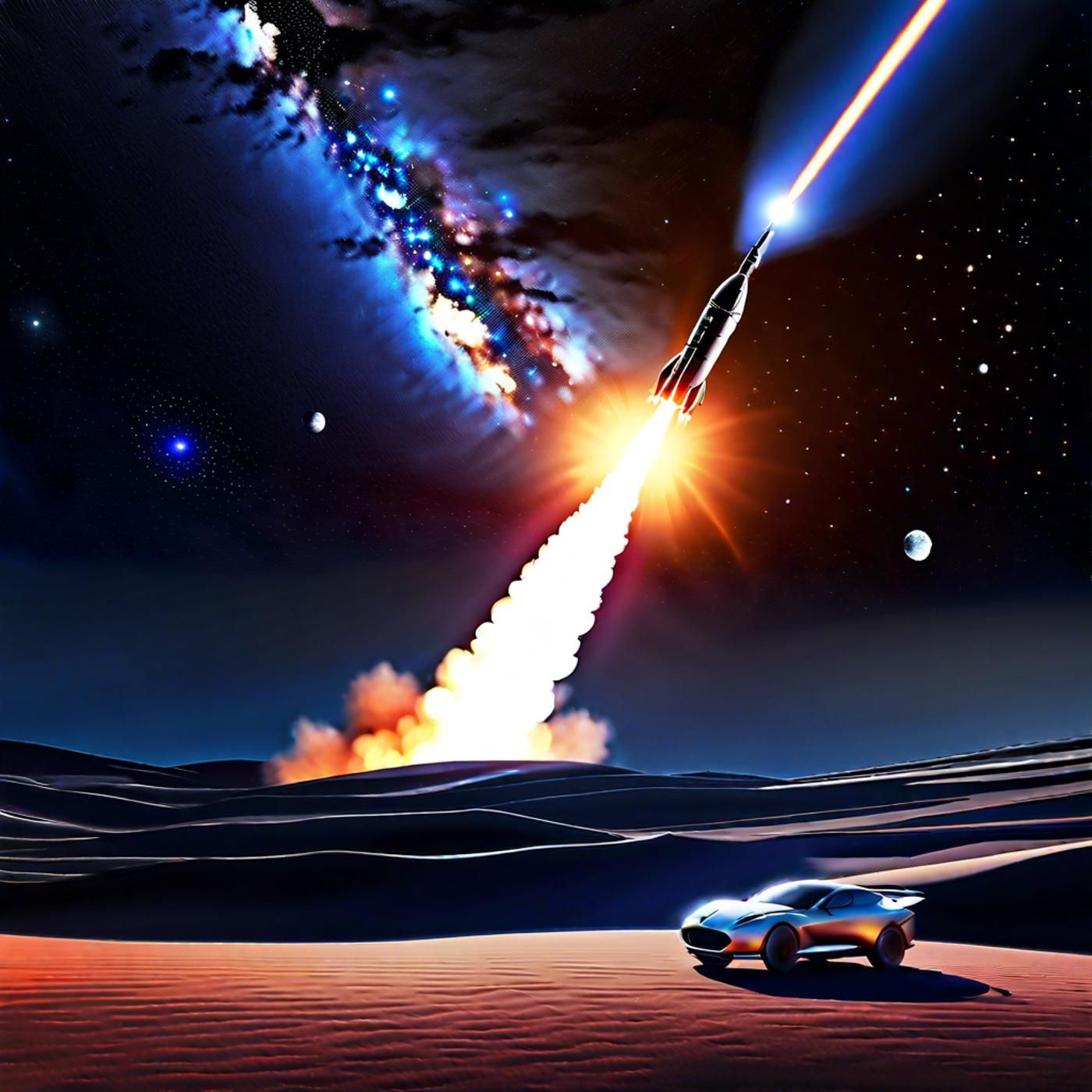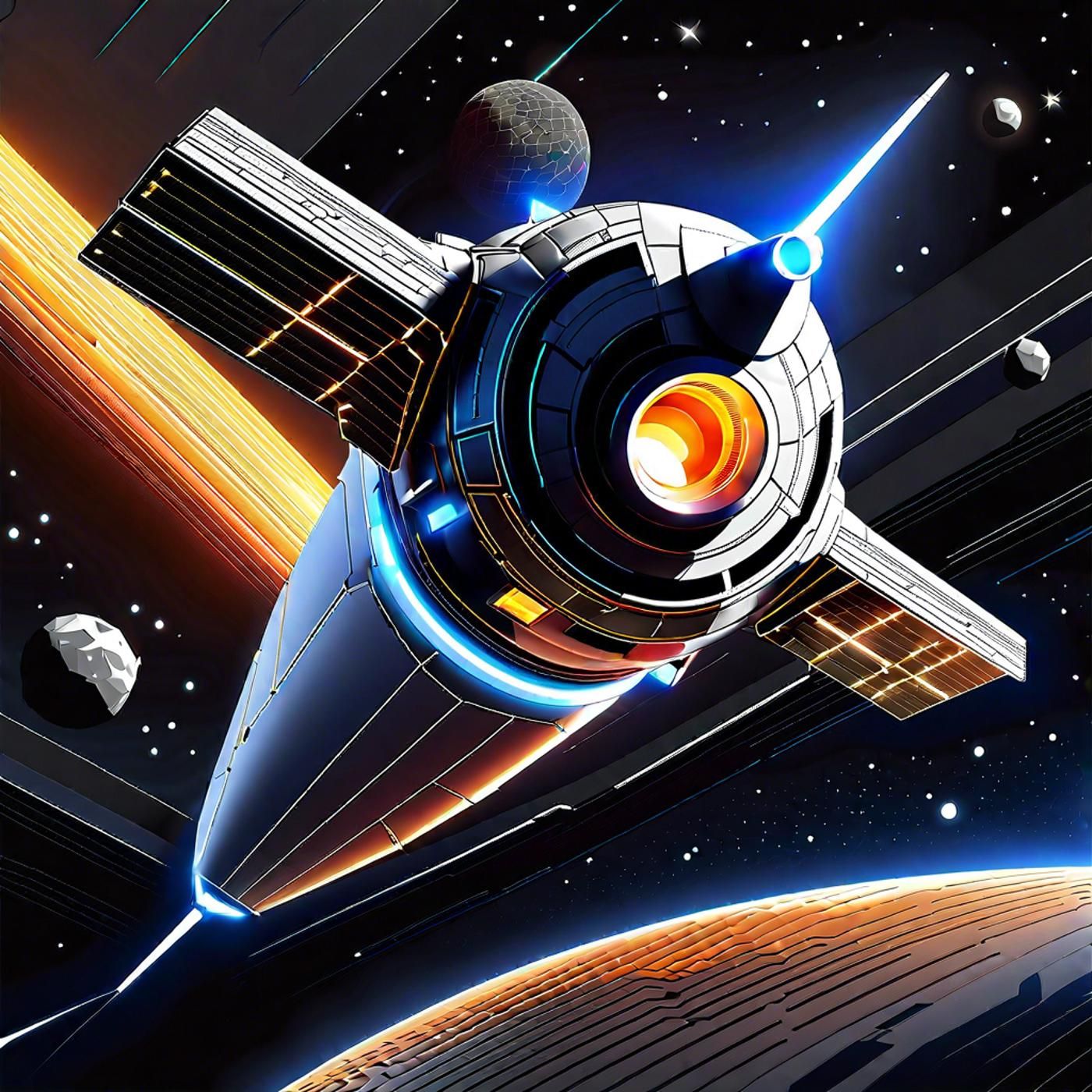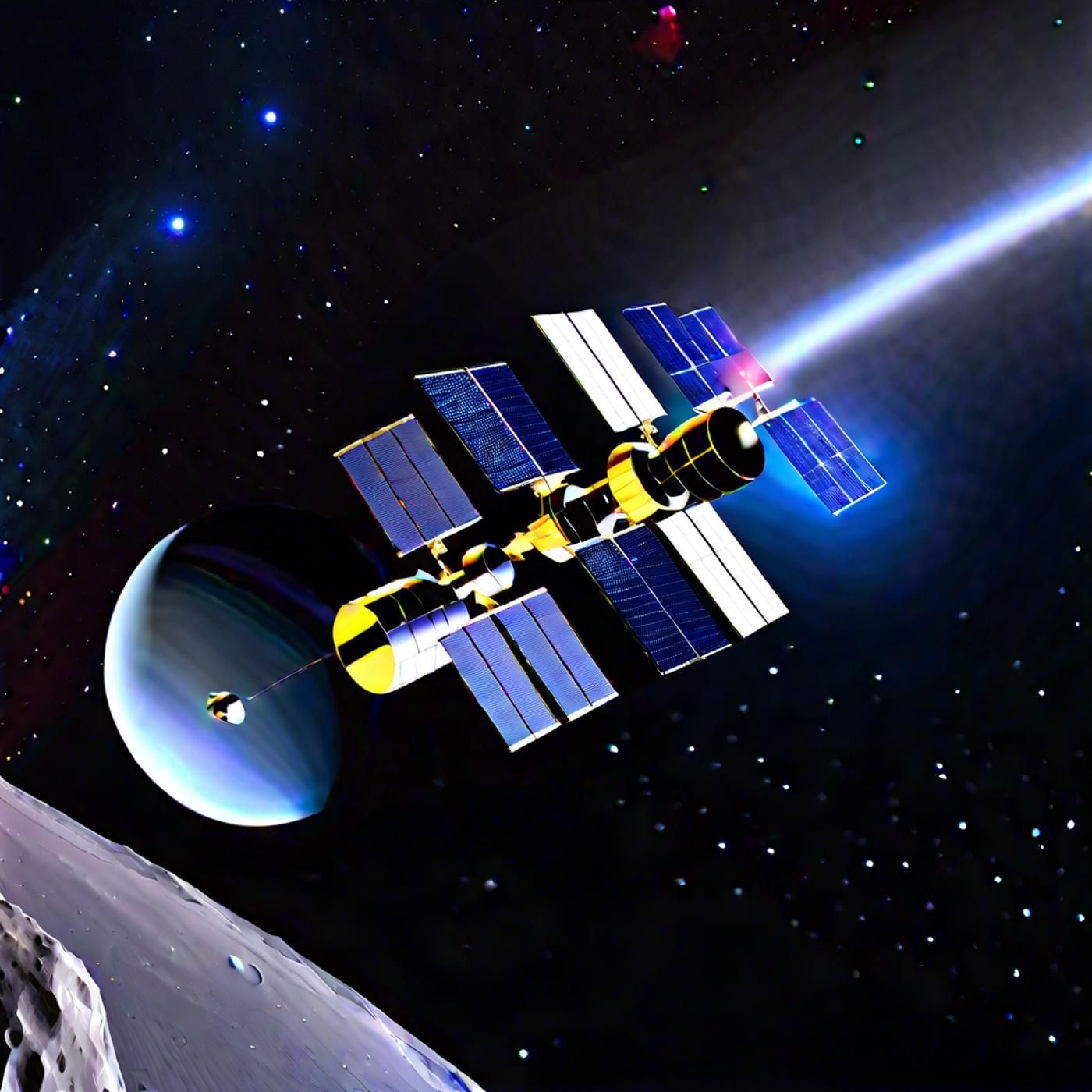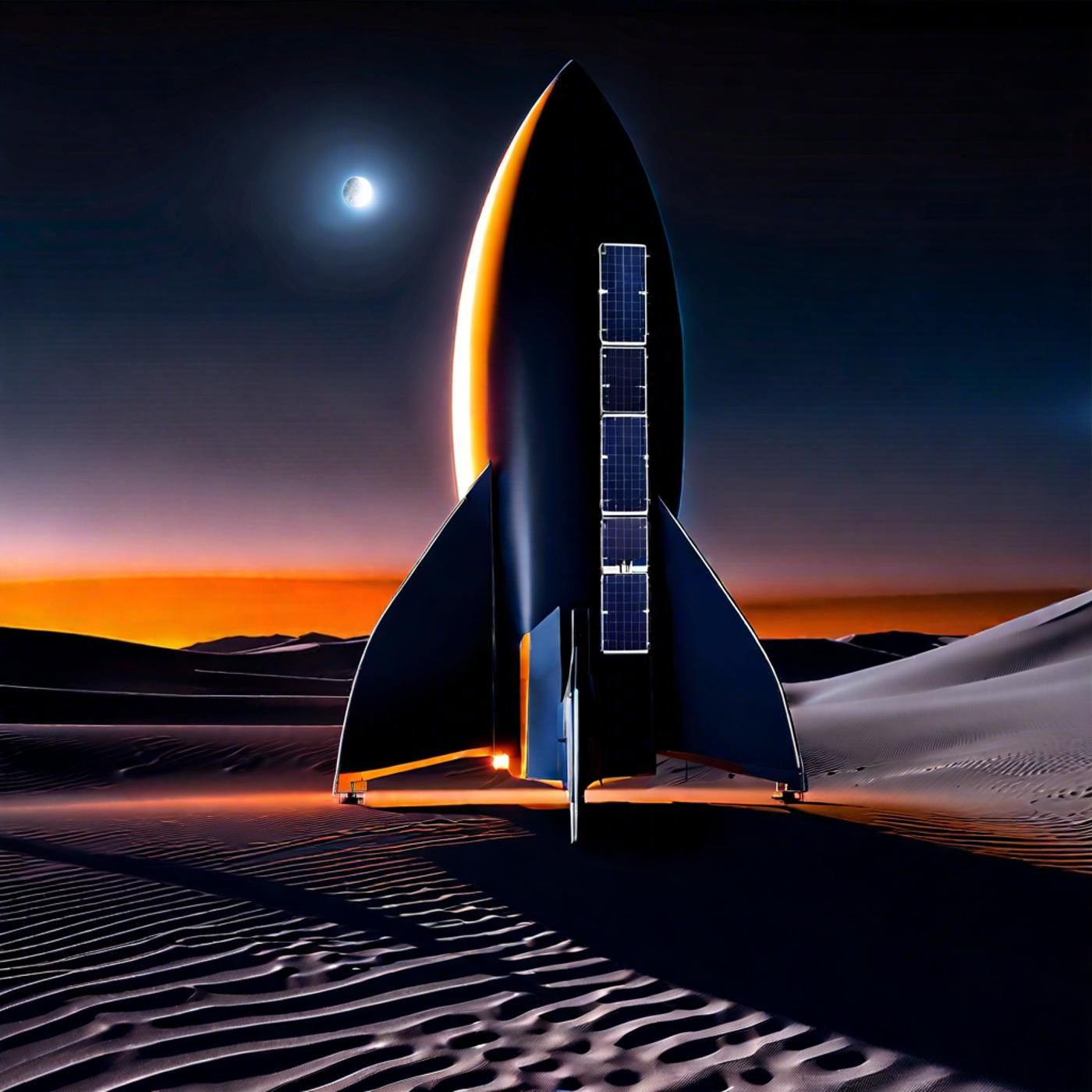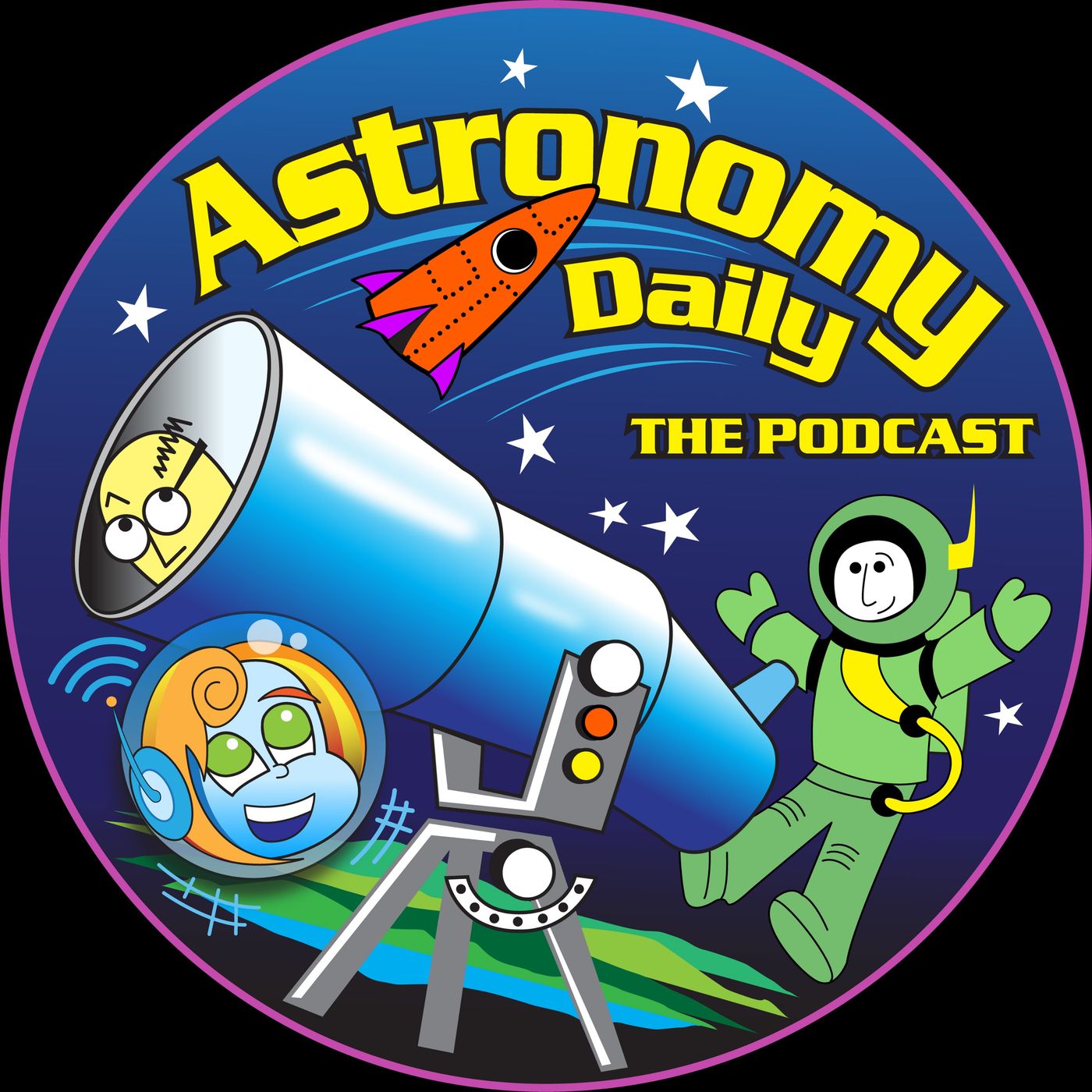S03E68: Starliner's Historic Test & Artemis III Milestone: NASA's Lunar Leap and Neutron Star Discovery

Embark on a celestial journey with today's episode of Astronomy Daily - The Podcast, where your host, Anna, brings you the latest cosmic updates. We'll start with NASA's groundbreaking crewed test of the Starliner spacecraft, marking a significant...
Embark on a celestial journey with today's episode of Astronomy Daily - The Podcast, where your host, Anna, brings you the latest cosmic updates. We'll start with NASA's groundbreaking crewed test of the Starliner spacecraft, marking a significant milestone for the commercial crew program. Then, we'll delve into the Artemis III mission's progress, highlighting a crucial integrated test involving NASA, Axiom Space, and SpaceX. Next, we'll discuss the discovery of the slowest spinning radio neutron star, a finding that challenges our understanding of these celestial objects. We also cover the decommissioning of the first telescope on Hawaii's Mauna Kea volcano, a move balancing scientific research with cultural values. Additionally, we'll bring you updates from the European Space Agency on the upcoming launch of the Ariane 6 rocket. Lastly, we explore a fascinating new book on the history of UFOs. Buckle up for a journey through the cosmos!00:00) Astronomy daily brings you the latest news from space exploration and astronomy
For an astronomical experience, visit our website at astronomydaily.io for the latest news, sign up for our free newsletter, and check out exclusive sponsor deals. Connect with us on X (@AstroDailyPod) for engaging discussions with fellow space aficionados. This is Anna, reminding you to keep your gaze fixed on the heavens. Until our next stellar episode, let the cosmos ignite your curiosity and wonder. Clear skies and cosmic discoveries to all!
Support: The podcast is better with your support: https://www.bitesz.com/show/astronomy-daily-the-podcast/support/
www.bitesz.com
Sponsors:
www.bitesz.com/nordpass
https://www.bitesz.com/show/astronomy-daily-the-podcast/sponsors/
Astronomy daily brings you the latest news from space exploration and astronomy
Anna: welcome to Astronomy daily, the podcast that keeps you up to date with the latest happenings in the world of space exploration and astronomy. I'm Anna, and I will be your host for this episode. Today, we have an exciting lineup of stellar news to share with you. We'll be discussing NASA's groundbreaking crewed test of the Starliner spacecraft, significant progress in the Artemis III mission, the discovery of an unprecedented neutron star, and noteworthy developments on Hawaii's Mauna Kea volcano. We also have updates from the European Space Agency on the upcoming launch of the Ariani Six rocket, and a fascinating new book exploring the history of UFO's. So buckle up and get ready for a journey through the cosmos.
NASA astronauts Butch Wilmore and SUNY Williams successfully enter orbit
Execute audio the Astronomy Daily podcast NASA astronauts Butch Wilmore and SUNY Williams have successfully entered orbit aboard Boeing's Starliner spacecraft in a historic test flight to the International Space Station ISS. This mission marks the first crewed flight test for the Starliner system. A significant milestone for NASA's commercial crew program liftoff occurred at 10:52 a.m. m EDT from Space Launch Complex 41 at Cape Canaveral Space Force Station in Florida aboard a United launch Alliance Atlas V rocket. The primary objective of this mission is to validate the Starliner system, testing its transportation capabilities, launch performance, in orbit operations, and return procedures. Prior to this crewed test, the Starliner completed two uncrewed orbital flights and a pad abort demonstration. With this flight, Boeing aims to secure certification for the Starliner to undertake regular rotational missions to the ISS, bolstering NASA's capacity for human spaceflight. Boeing's mission control center in Houston is keeping a close watch, monitoring a series of automatic spacecraft maneuvers. Notably, this mission highlights over a decade of collaborative effort from NASA's commercial crew program and its industry partners, signifying a pivotal moment for the future of american space exploration. After docking with the ISS, Wilmore and Williams will perform a series of tests to ensure that the spacecraft systems, such as the environmental controls and thrusters, are functioning as designed. If successful, this flight will pave the way for future missions, exemplifying progress toward reliable and cost effective transport of astronauts to space. Enhancing the United States human spaceflight capabilities NASA and Axiom space have marked a significant milestone in their journey towards the Artemis III mission, which aims to return astronauts to the moon by 2026. Recently, a groundbreaking integrated test took place involving a pressurized simulation that brought together NASA Axiom space and SpaceX, making it the first such collaboration since the Apollo era. The test was conducted to gather crucial data on the interaction between the advanced spacesuit developed by Axiom Space and SpaceX's starship human landing system. Astronauts Peggy Whitson and Douglas Wheelock provided valuable feedback during the simulation, helping engineers refine both the suit and the lander designs. Russell Ralston, Axiom Space's vice president of extravehicular activity, emphasized that astronaut feedback is vital for making iterative improvements and developing innovative solutions. In just under two years, Axiom Space has made remarkable progress in spacesuit design and testing. The suit has already passed NASA's preliminary design review and is set to enter the critical design review phase later this year. Recent trials at NASA's neutral Buoyancy Laboratory simulated lunar gravity, ensuring the suit's capabilities to support extensive scientific research on the moon. This milestone marks a significant leap forward in preparing for the Artemis III mission, as continued testing and refinements bring humanity ever closer to once again setting foot on lunar soil.
Scientists have recently made a groundbreaking discovery of the slowest spinning radio neutron star
Scientists have recently made a groundbreaking discovery in the field of astrophysics, the slowest spinning radio neutron star ever detected. This neutron star, identified by a team of international astronomers led by Doctor Manisha Caleb and doctor Emil Lenk, emits radio signals at an unprecedented interval of 54 minutes. This rotation rate is significantly slower than any of the more than 3000 radio emitting neutron stars measured to date neutron stars, the dense remnants of supernova explosions typically rotate at extremely high speeds, often completing a full spin in a matter of seconds or even milliseconds. The newly discovered neutron star challenges our understanding of these celestial objects, demonstrating that there are still many surprises hidden in the cosmos. The research team suggests that this unusual finding could reshape our knowledge about the life cycles and physical properties of neutron stars. The discovery was made using CSIRO's ASCAP radio telescope in Western Australia and was further verified by the Meerkat radio telescope in South Africa. The neutron star, located approximately 16,000 light years from Earth, emits three distinct states of radio waves, each with unique properties. These findings open new avenues for studying how compact stellar remnants evolve and interact with their environments. The researchers have not entirely ruled out the possibility that this object could be an isolated white dwarf with an extraordinarily strong magnetic field. However, the likelihood of it being a neutron star remains higher. Further studies are needed to confirm the object's nature and to explore the intriguing new questions it raises about the universe. This discovery underscores the importance of continuous observations and the development of advanced radio telescopes to push the boundaries of our knowledge about the cosmos in a significant move aimed at balancing astronomical research with the cultural values of indigenous Hawaiians. The first telescope on the sacred Mauna Kea volcano has been fully decommissioned and its site meticulously restored to its original condition. This marks a milestone in the ongoing effort to respect the lands cultural and environmental significance while still advancing scientific endeavors. The decommissioning process was executed under a comprehensive plan that involved careful deconstruction and removal of the telescope and its associated infrastructure. This plan also includes a three year monitoring period to assess the environmental impact and ensure the successful restoration of local wildlife and vegetation. This move comes as part of an agreement between the University of Hawaii and the Mauna Kea Stewardship and Oversight Authority, which aims to reduce the number of telescopes on the mountain and address the concerns of the indigenous community. This authority, which includes representatives from local government observatories and experts in hawaiian culture, is a testament to the collaborative effort to find harmony between scientific exploration and the preservation of Mauna Kea's cultural heritage. The decommissioning of Hoku Kea, the first of three promised telescope removals, sets a precedent for future projects, including the contentious 30 meters telescope. The hope is that this respectful approach will pave the way for more consensual and considerate scientific activities on Mauna Kea.
European Space Agency sets July 9 as date for Ariani Six test launch
The European Space Agency has set a significant date in its space exploration calendar, July 9, when the new Ariani Six rocket will have its highly anticipated test launch. This next generation rocket marks a pivotal step forward for Europe in achieving autonomous and versatile space travel capabilities. Ariani Six is designed to replace the renowned Ariani Five, which has been retired after a remarkable service spanning from 1998. With its versatile modular design, Ariani Six can be configured with either two or four strap on boosters to accommodate various payload requirements. It boasts the impressive ability to launch payloads ranging from 4500 into a variety of orbits thanks to its reignitable upper stage, which supports multiple payload releases in different orbits. ES director general Josef Ashbacher highlighted the dedication and ingenuity that went into developing Ariani Six, stating that this powerful rocket represents a new era for european space endeavors. Significant milestones have been achieved, including a successful full fuel test simulating a flight to space, which underscores the readiness for commercial operations and future ambitions. With its inaugural flight just around the corner, Ariane Six is poised to reaffirm Europe's independent access to space and its commitment to pushing the boundaries of what's possible in space exploration.
A new book by Greg Egygian delves into the UFO phenomenon
A new book by Greg Egygian titled after the Flying Saucers, a global history of the UFO phenomenon delves into the captivating history of UFO sightings and alien abductions. In this insightful work, Egygian explores how these unexplained aerial events have become intertwined with humanity's cultural and technological developments since World War two. Egygian traces the origin of the term unidentified flying object and investigates how societies, scientists, and governments across the globe have responded to these mysterious sightings. By diving into archives, newspaper reports, and expert interviews, he uncovers the stories and theories that have captured public imagination over the decades. One key insight from the book is the link between the post war technological boom and the surge in UFO reports. The era of jet airplanes, rockets and intercontinental ballistic missiles combined with cold War anxieties provided fertile ground for the UFO phenomenon to take root. Egygians examination reveals that these sightings are not just about extraterrestrial visitors, but reflect humanitys hopes, fears and the potential of technological advancement. In essence, after the flying saucers came not only documents the history of UFO's, but also offers a lens through which we can understand our own evolving perspectives on science and the unknown. It's a story as much about us as it is about the mysterious objects in the sky. Thank you for tuning into this episode of Astronomy Daily hosted by Anna. We hope you found today's space news as exciting and inspiring as we did. Remember to stay updated with all the latest in space and astronomy by following us on YouTube and X. Just search for Astrodaily pod. Additionally, don't forget to visit our website at astronomydaily IO for even more up to date news and to catch all of our previous episodes. Until next time, keep looking up Astronomy.
New to Astronomy Daily - The Podcast?
Here are some great episodes to start with.














